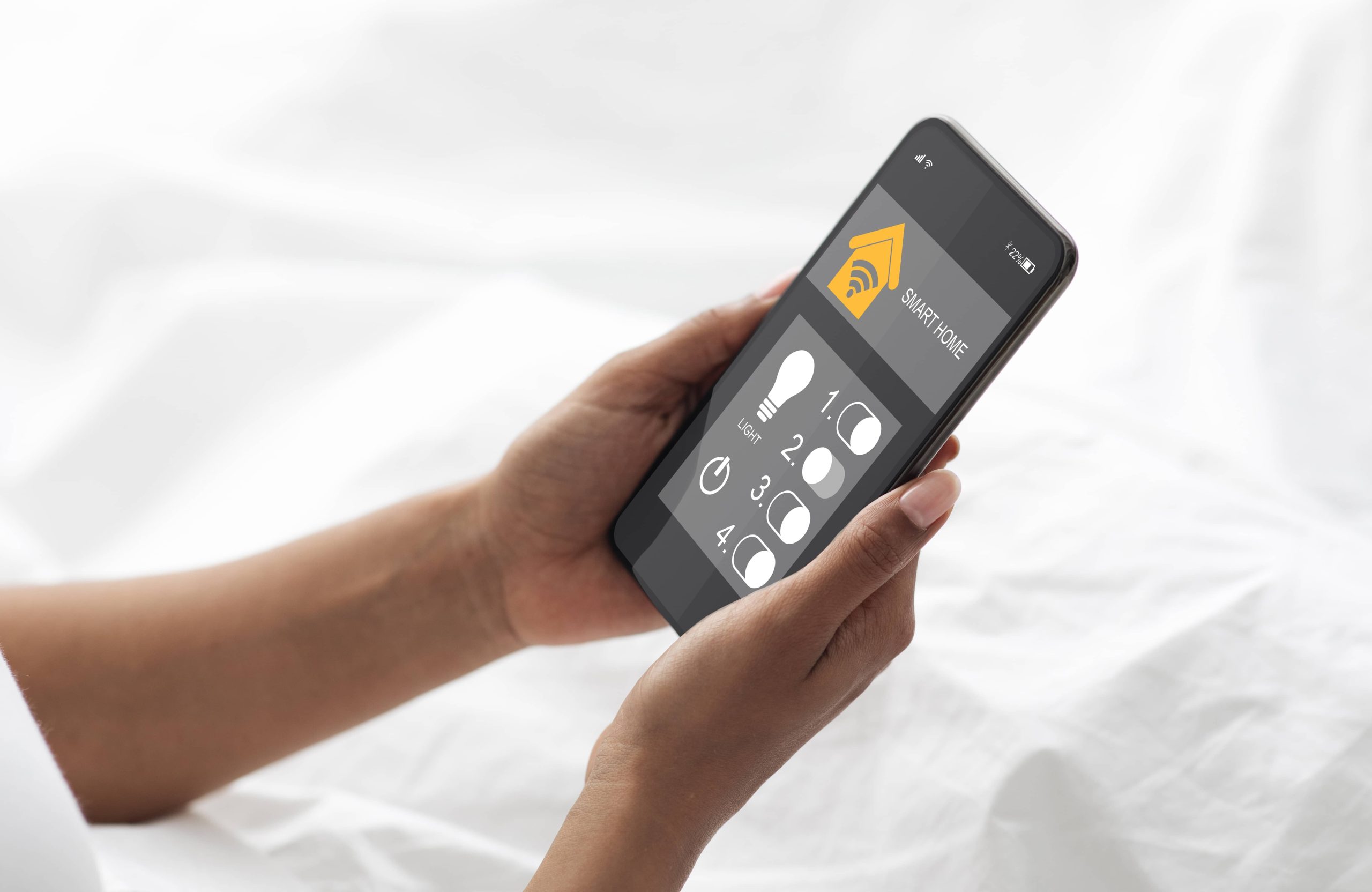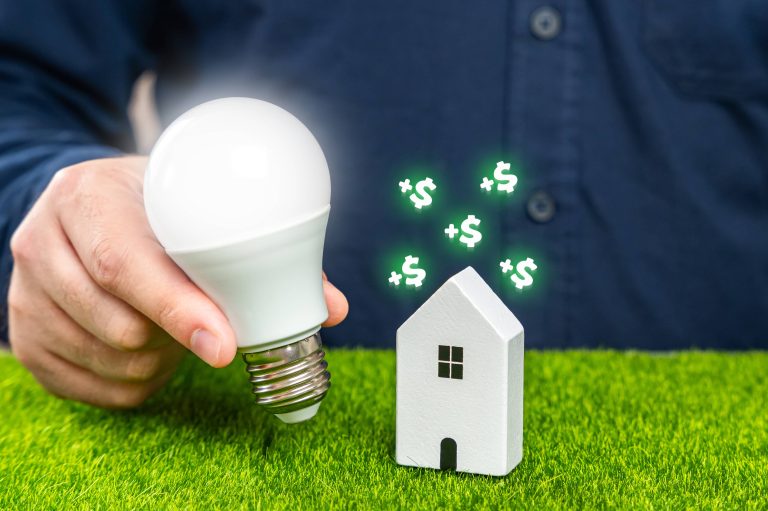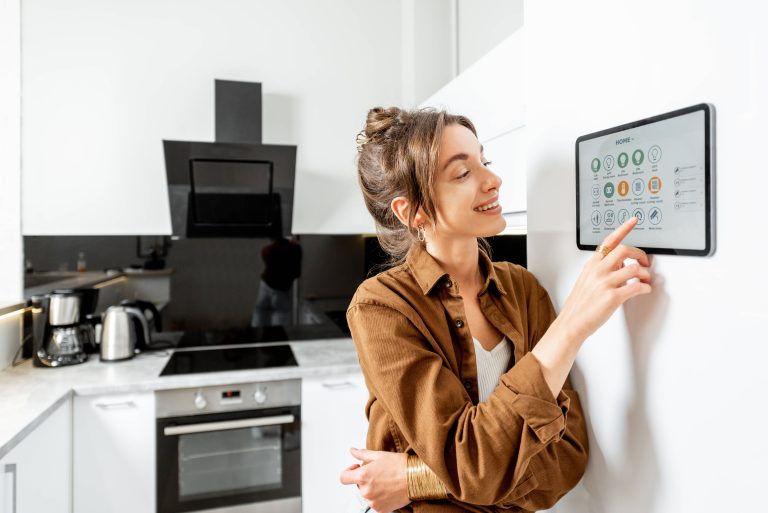
In today’s digital age, where remote work and freelancing are becoming increasingly popular, automating your home office can significantly enhance productivity. Whether you’re an entrepreneur, a remote employee, or a freelancer, the right smart home devices and integrations can transform your home office into a highly efficient workspace. In this blog post, we’ll explore the essential gadgets and systems that can automate your home office for maximum productivity.
1. Smart Lighting for Optimal Ambience
The importance of good lighting in a home office cannot be overstated. Poor lighting can lead to eye strain and fatigue, which in turn affects productivity. Smart lighting solutions like Philips Hue or LIFX can be game-changers. These smart bulbs allow you to adjust brightness and color temperatures to suit your needs and preferences.
For example, you can program your lights to start the day with a sunrise simulation, gradually increasing brightness to ease you into your workday. Throughout the day, you can adjust the color temperature to higher “cool white” settings to keep you alert, and switch to warmer tones in the evening as you wind down.
2. Intelligent Climate Control
Maintaining a comfortable temperature in your home office is crucial for staying focused and productive. Smart thermostats like the Nest Learning Thermostat or Ecobee can learn your schedule and preferences, automatically adjusting the temperature to keep you comfortable throughout the day.
Furthermore, pairing your smart thermostat with other devices like fans, humidifiers, or air purifiers via smart outlets or systems like Amazon Alexa creates a perfectly balanced environment. This is particularly beneficial if your workspace is in a part of your home that isn’t consistently climate-controlled, like a garage or attic.
3. Voice Assistants for Seamless Workflow
Voice assistants like Amazon’s Alexa, Google Assistant, or Apple’s Siri can significantly streamline your work processes. Integrating a voice assistant into your home office allows for hands-free control over various tasks. You can set reminders, dictate emails or notes, manage your calendar, and even control other smart devices without breaking your workflow.
For instance, setting up routines or automations via these voice assistants means you can start your workday by saying, “Good morning, Alexa”, triggering a sequence that turns on your lights, adjusts your thermostat, reads your agenda for the day, and even starts brewing your coffee.
4. Smart Plugs for Energy Efficiency
Smart plugs like TP-Link Kasa or Wemo can help manage the power consumption of all your devices. They enable you to turn devices on or off remotely via an app, schedule them to operate only during work hours, or even monitor their energy usage.
This not only helps in reducing energy consumption but also ensures that devices like printers, desk lamps, or chargers aren’t needlessly running when not needed. It’s a small step towards reducing your energy footprint while enhancing your workspace’s efficiency.
5. Advanced Security Systems
Protecting your work data and equipment is paramount, especially in a home office. Smart security systems like SimpliSafe or Ring can provide peace of mind with their comprehensive security solutions. These systems typically include smart cameras, motion sensors, door/window sensors, and even smart locks.
Moreover, integrating these security features with voice assistants or smart hubs can add another layer of convenience. For example, you can set alerts for unusual activity or even automate locking your office door at a certain time each day.
6. Ergonomic Smart Furniture
A significant portion of productivity is tied to how comfortable you are while working. Smart ergonomic furniture, like the Autonomous SmartDesk or VariDesk, can adapt to your preferred settings for optimal comfort and posture.
These desks often come with programmable height settings, allowing you to easily switch between sitting and standing positions. Some advanced models even have integrated health tracking to remind you to take breaks and stretch, thus promoting better health and focus.
7. Automated Task Management
Managing your tasks efficiently is the cornerstone of productivity. Tools like Notion, Todoist, or Trello become even more powerful when they are integrated with smart home systems. You can connect these apps with your voice assistant or smart displays to receive visual or auditory reminders, update tasks, or streamline workflows.
For instance, you can use automation services like IFTTT (If This Then That) or Zapier to create automations across different platforms. You could automate a task like “When I say ‘Start working’ to Alexa, set my status to ‘Busy’ in Slack, turn on my desk lamp, and open my daily planner in Notion.”
8. Enhanced Connectivity and Hardware Integration
Stable and fast internet connectivity is the backbone of any productive home office. Investing in a robust Wi-Fi system like Google Nest WiFi or Eero can ensure seamless connectivity throughout your home.
Additionally, consider integrating your various devices—computers, smartphones, tablets—to work together smoothly. Tools like Logitech Flow enable the seamless movement of your cursor across multiple computers and even copy-paste between them, making multitasking faster and more intuitive.
Conclusion
Automating your home office isn’t just about adding the latest gadgets; it’s about creating an environment that promotes efficiency, comfort, and productivity. By leveraging smart lighting, climate control, voice assistants, smart plugs, advanced security systems, ergonomic furniture, automated task management, and enhanced connectivity, you can transform your workspace into a productivity powerhouse.
Investing in these smart home solutions will undoubtedly pay off by making your workday smoother, more efficient, and less stressful. Remember, the key to a productive home office is ensuring that your environment works for you, allowing you to focus on what matters most—doing your best work. Happy automating!







